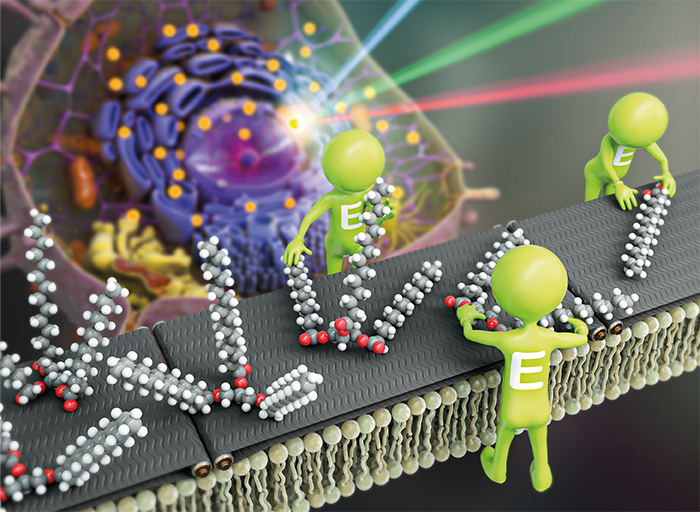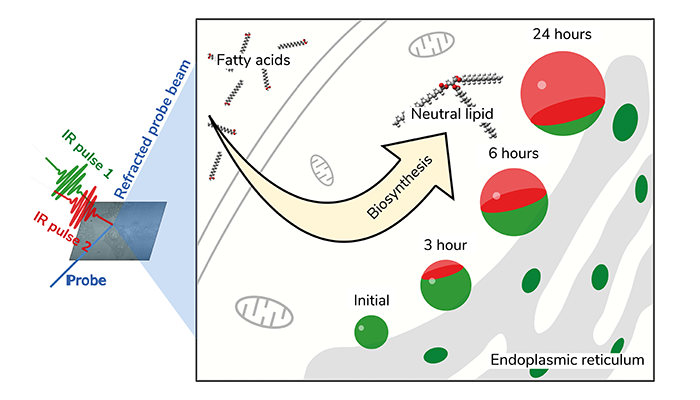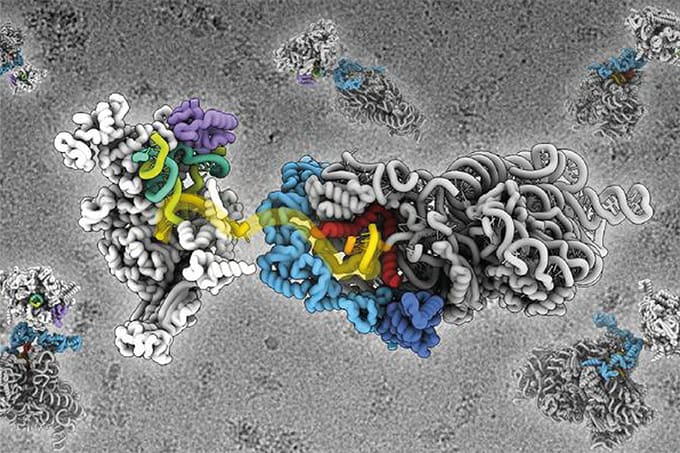
Despite a long history of being somewhat overlooked, lipid droplets have recently been found as dynamic players in metabolic disorders, such as obesity, diabetes, and cardiovascular diseases. With this enlightening discovery, researchers are striving to reach a deeper understanding of lipid droplets and their function.
With this in mind, a team of South Korean researchers at the IBS Center for Molecular Spectroscopy and Dynamics (IBS CMSD) developed a two-color infrared photothermal microscopy (2C-IPM) technique (1). Crucially, 2C-IPM offers extended periods of observation and analysis of lipid droplets within living cells – without the need for specially designed exogenous or genetically encoded fluorescent labels.
To learn more about this exciting discovery, we spoke with Minhaeng Cho, corresponding author of this study.
What are the benefits of 2C-IPM technology?
Our 2C-IPM technology simplifies the process of detecting multiple biomolecules in living cells. Unlike conventional methods that require sequential measurements and face challenges in observing dynamic changes, 2C-IPM enables simultaneous detection of multiple biomolecules using a single approach.
This technology overcomes limitations associated with traditional fluorescent microscopy, such as photo-bleaching (the degradation of fluorescent dye). It allows for long-term observation of biomolecules without the need for complex sample preparation involving fluorescent dyes and protein labeling.

Figure 1. An illustration of the measurement of neutral lipid synthesis within lipid droplets over time using 2C-IPM. (Credit: Minhaeng Cho and Chanjong Park)
What challenges did you encounter during development – and how did you overcome them?
Subcellular organelles and associated structures are intricately positioned within cells, which hinders the propagation of laser beams used in infrared analysis. Additionally, lipid droplets exhibit a wide range of sizes and shapes – varying the extent of light scattering and refraction, and posing difficulties in interpreting the obtained microscopic signal. To address this challenge, we repeated experiments under various conditions and established a calibration method – allowing for accurate quantity measurement of neutral lipids regardless of the shape and size of the droplet.
Please summarize your key findings…
We successfully demonstrated 2C-IPM’s ability to distinguish newly synthesized neutral lipids from endogenous neutral lipids in lipid droplets – alongside quantifying their ratio based on inherent infrared absorption. 2C-IPM’s capability of observing real-time synthesis of neutral lipids in lipid droplets within cells is particularly significant and provides fundamental information on the biological mechanism of lipid cell accumulation.
What’s next for this research?
Our study confirmed that 2C-IPM works effectively at observing lipid droplets in Huh-7 liver cells, but we’re hoping to take this even further by investigating lipotoxicity in different liver cells. We’re hoping this research will provide us with a deeper understanding of the role of intracellular lipid droplets in various liver-related metabolic diseases – leading to the development of new methods for studying lipid metabolism and disease diagnosis.
What are your hopes for the future of this technology? Could 2C-IPM be applied in other fields?
2C-IPM also holds potential for infrared spectroscopic analysis of a broader range of biomolecules and functional materials thanks to its technical foundation rooted in measuring infrared absorbance in a specimen. We’ve already demonstrated the capability of IPM for studying changes in protein distribution throughout the cell cycle in living brain cells. With this in mind, we’re hoping that 2C-IPM and associated methodologies provide opportunities for uncovering hidden biological phenomena and opening avenues in related research fields.
References
- C Park et al., Chem Sci, 4 (2024). PMID: 38274065.




